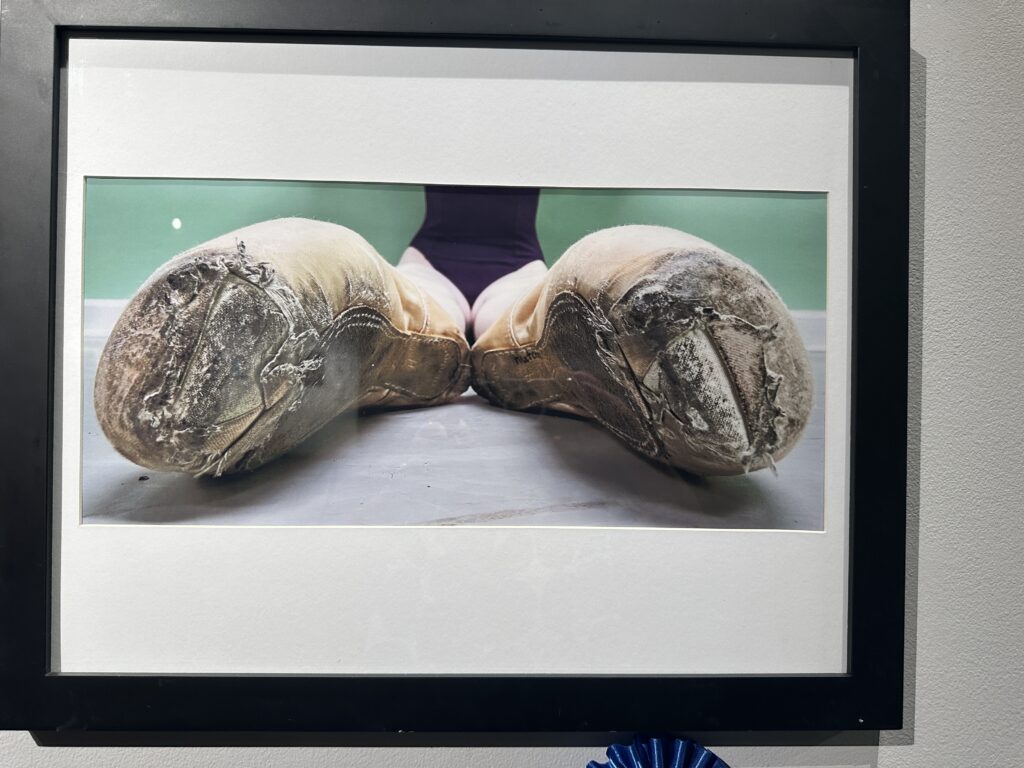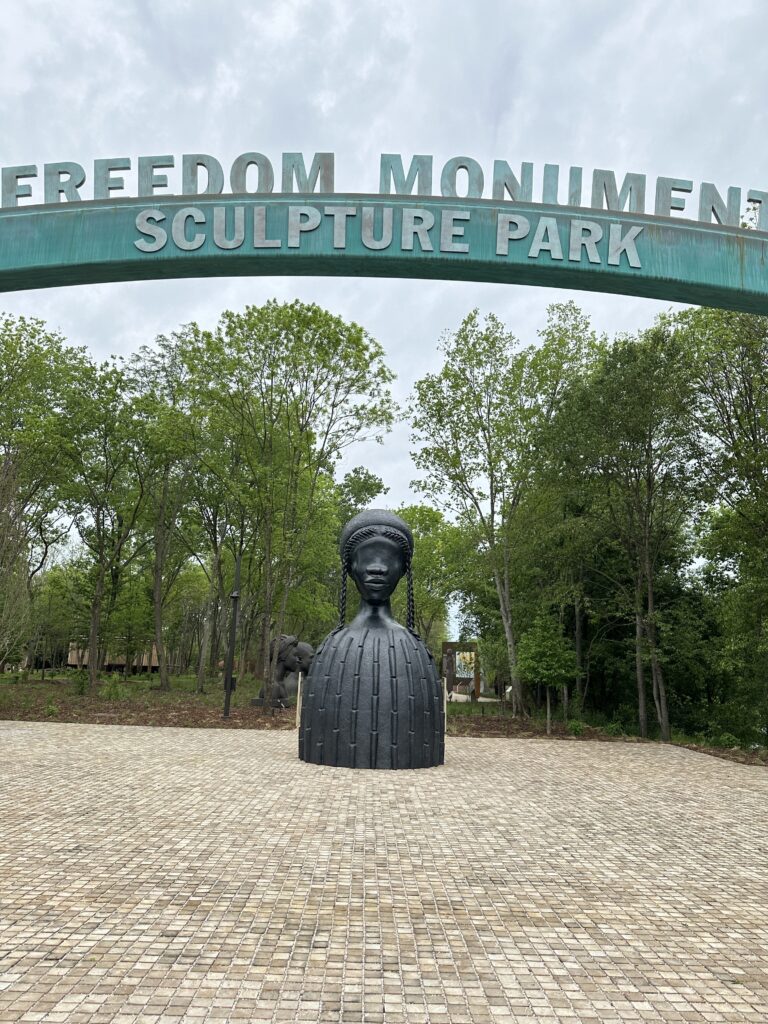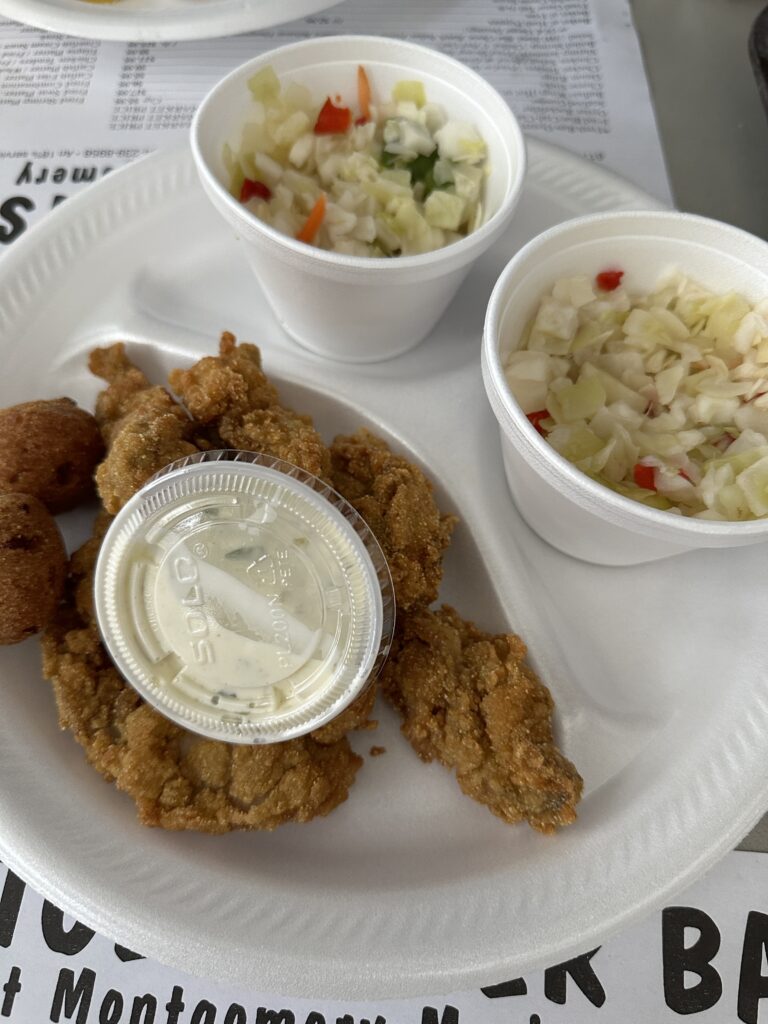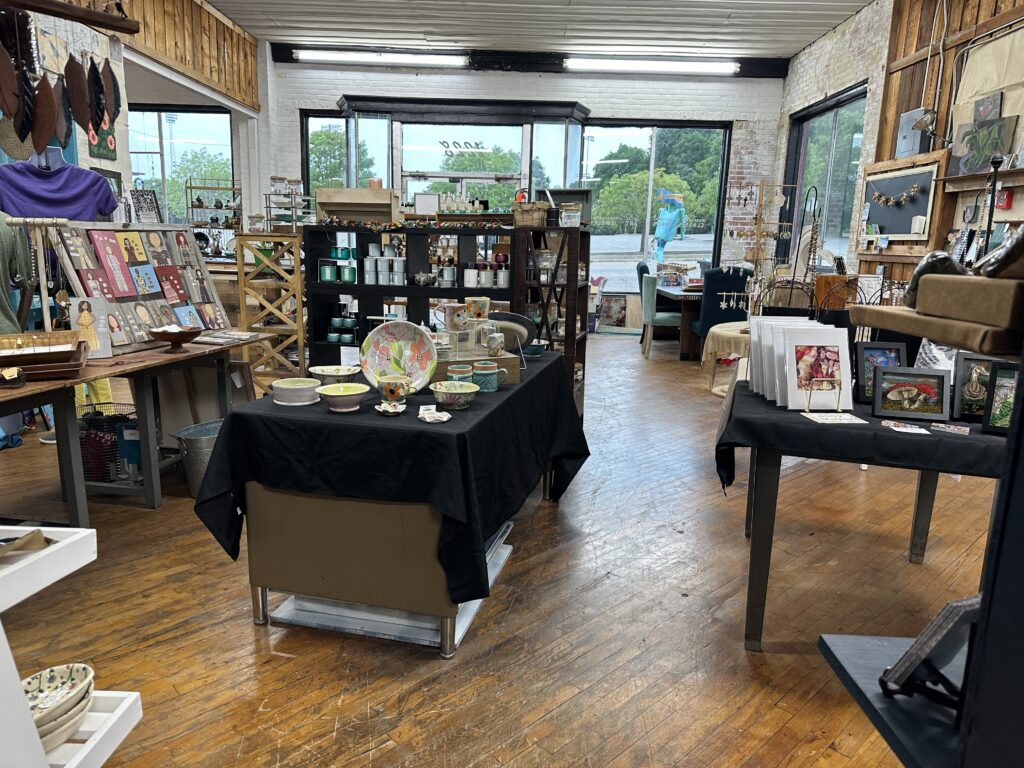Montgomery, Alabama, Day 2
We had breakfast in the hotel and plotted our day. We always check out the local art. I had found two spots, and we started our day at one of them, the Alabama Artist Gallery, located on the first floor of a very tall Government building. There are a bunch of enormous government buildings but few people on the streets, which made us ask multiple questions that were never answered.

What we found at the gallery was an installation of the local high schoolers’ work, many of whom had been given colored ribbons. Seeing what kids at that age make is definitely insightful. This was one of the pieces, a ballerina’s slippers.

The next stop was Freedom Sculpture Park. It is pure luck that this park opened a few weeks ago. The big opening is June 19th; although you can visit the park now, you can not take photos except for a few locations. This is the journey’s start, and I was allowed to photograph this.
The park is set on 17 acres on the banks of the Alabama River. The landscape consists of trees typical of the South, with branches up high, creating shade from the heat. The reality of American history is about to hit you in the face. The attention to architectural and historical detail is awe-inspiring. Commissioning art from a slew of American Black artists today who use their medium to feel the generational trauma that they have endured next to etched iron stories of slaves is gut-wrenching. It is also brilliant because even if you do not take the time to read every piece of information, although we did, you just have to see the artwork to understand the agony these people endured and how inhumane it all was. Each museum is consistent with the art installations, historical factual stories, and personal narratives.
The committees that worked on this and the donors who gave have left us all a gift that can help change how we discuss race in this country. Every 9th grader should go and see this museum; it would be game-changing, and you can’t help but leave with a different set of eyes.
Montgomery was the major center of slavery; at one point, over 65% of the people who lived there were enslaved. We walked through the circular path around each of the art pieces, telling the history of the slave trade, beginning with the transatlantic passage of those kidnapped and then sold into bondage.

At the end, we were allowed to photograph this 43-foot by 155-foot sculpture etched with each slave’s name that was recorded somewhere, many were not.

We needed lunch, so we went to Capitol Oyster Bar, which sits over a tiny marina amid scrap metal yards. This place is legit, and there is live music many nights.

Oysters are from the river down in the South. They are big, creamy, and not so briny. I like them raw, but the way to eat them down there is fried, so we did.

After lunch, we had time to sneak in at the Southern Arts and Makers Gallery. True local art. We each bought something before heading to the Legacy Museum. Again, no photographs.
We were lucky throughout the trip that few people were visiting the Legacy trio, which allowed us to take it all in. The museum sits on the spot where enslaved people were taken before they were auctioned off. Each spot is self-guided, so each story is told as you move through the museum. They mirror each other so people stay on their side; it is replicated. It is super smart for crowd control.
Again, these places take no prisoners, and they shouldn’t. The first room is dimly lit, with one path down the middle. On both sides is a moving picture of waves crashing up and down, making visitors feel like they are on the boat. As the water drops down onto the sandy banks and pulls back, multiple sculptured heads in obvious agony are installed there. And then the journey through the Legacy Museum begins.
The rest of the rooms tell stories from the slave trade to mass incarceration and police brutality. Interactive stories about people in jail, including a few short films, are also featured. This museum exposes the reality of Black history in America. At the end of the visit are two extensive galleries filled with works of Black contemporary artists that point directly to their generational trauma from slavery. It wasn’t expected, and making sure that art is part of the story is ingenious.
We left and sorely needed a drink. What a day. We hit up the bar and then the Central restaurant across the street. It is a new spot that probably brings people from outlying areas into town, which is good. Personally, I prefer the local spots that haven’t changed in decades.
The last piece of the Legacy trio is tomorrow. What a day.

